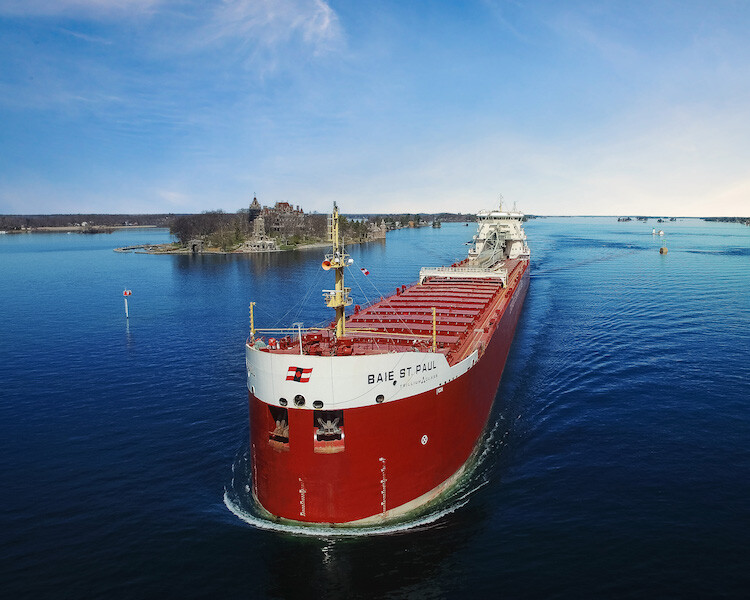The St. Lawrence Seaway Management Corp. (SLSMC) announced this week that more than 38 million tonnes (41.8 million tons) of cargo transited the system during the 2021 navigation season, topping the previous year's results.
Iron ore, steel slabs and other steel products posted strong performances, contributing to over 10.5 million tonnes of the total, which was driven by demand from both the automotive and construction industries.
SLSMC traded cargo with over 50 countries, confirming the Seaway’s role as an important transportation corridor connecting North America’s largest industrial hubs to markets around the world, as well as in identifying export opportunities and contributing to the economic recovery.
Petroleum products and other essential chemical products were up 5%, and are starting to return to more normal levels. Such varied cargoes as stone, cement, potash and aluminum were also up. grain, at 10.6 million tonnes, is below last year’s exceptional results due to a smaller crop and drought conditions in both western Canada and the U.S. midwest. Canadian grain, however, was still tracking at a five-year average.
“At the Seaway, we continue to demonstrate our resiliency and operational sustainability,” Terence Bowles, president and CEO of the SLSMC, said in a statement. “In spite of the many challenges experienced by the transportation industry this past year, the Seaway was able to maintain its operations and its position as a reliable commercial transportation corridor, ensuring consistent and predictable service for its customers and supporting the Canadian and U.S. economies during this difficult period.”
Reliability of the system is attributable in part to a robust maintenance program. Over the past navigation season and through the upcoming winter months, close to $70 million is being invested in SLSMC maintenance and repair work. Over the past decade, the SLSMC and GLS have invested CAN$925 million in modernizing the binational Seaway infrastructure assets. This economic activity supports many local jobs and enterprises in the communities adjacent to the Seaway.
“Throughout another year of challenges to the transportation industry, the Seaway’s performance highlighted its continued resiliency as a maritime supply chain,” Craig H. Middlebrook, deputy administrator of the U.S. Great Lakes St. Lawrence Seaway Development Corp. (GLS) said. “The Seaway handled an increase in cargo tonnage over the navigation season, and did so safely, reliably, sustainably, and in an environmentally sensitive manner. Seaway users know they can rely on the waterway to meet their domestic and international cargo needs.”
For over 60 years, the Canadian and U.S. Seaway corporations have worked closely with stakeholders to strengthen partnerships, enhance efficiencies and drive sustainable growth. Today, the Seaway is a world-class energy-efficient waterway, an essential transportation corridor for North American goods and services, as well as a strong environmental alternative to other modes of transportation.
The last commercial transit of the 2021 navigation season through the Montreal-Lake Ontario section occurred on Dec. 31. The Welland Canal had a later closing date, with the final vessel transiting on Jan. 7. The Seaway canals and locks traditionally reopen for shipping in mid-March, with major maintenance programs occurring during the non-navigation season.
Cargo shipments on the Great Lakes-Seaway system generate $45 billion of economic activity and 238,000 jobs in Canada and the U.S.
The binational St. Lawrence Seaway serves as the linchpin within the broader waterway, connecting the lower St. Lawrence River to the Great Lakes. Beginning in Montreal and extending to points west, the Seaway’s 15 locks (13 Canadian and two U.S.) enable ships to climb a total of 168 meters (551') from “sea level” up to Lake Erie.
SLSMC was established in 1998 as a not-for-profit corporation by the government of Canada, Seaway users and other key stakeholders. In accordance with provisions of the Canada Marine Act, the SLSMC manages and operates the Canadian assets of the St. Lawrence Seaway, which remain the property of the government of Canada, under a long-term agreement with Transport Canada.




